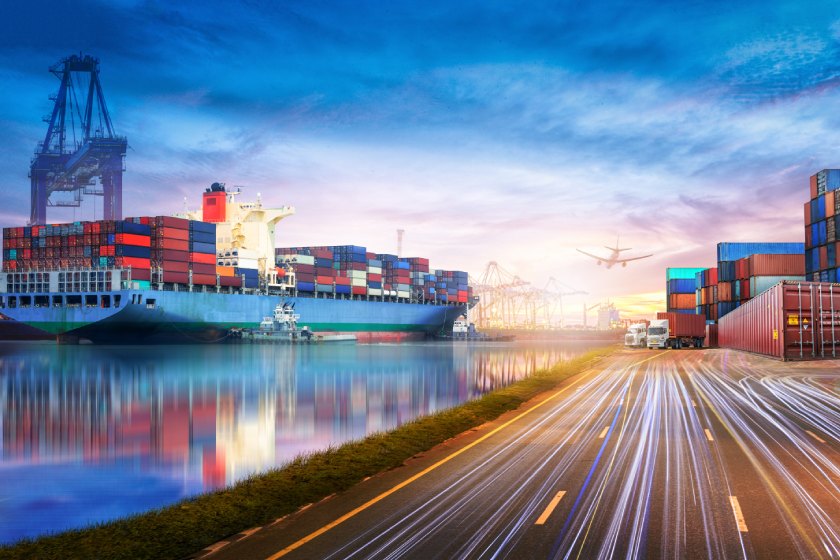Equipping professional accountants for sustainability
The International Federation of Accountants has developed a concise resource to guide accounting professionals and...
READ MORE
Supply chains remain a “significant” issue for almost three in 10 SMEs according to the latest data from the National Australia Bank.

For those in the wholesale sector, that rose to almost 50 per cent while nearly 25 per cent of SMEs still expect supply chain issues to be a significant concern in 12 months. Nearly 70 per cent believe greater investment in local manufacturing facilities is a key response.
The data was collected from surveying 760 SMEs that were asked about the impact on their business of supply chain disruptions, how they were addressing these issues and what they believed Australia should do to deal with future supply chain issues.
The survey was conducted between 21 February and 10 March 2022.
The results revealed that almost three in 10 (28 per cent) SMEs said supply chains were currently a “significant” issue for their business (scoring 8 pts or higher) and in Western Australia this climbed to 35 per cent.
By industry, it was a “significant” issue for almost one in two (47 per cent) wholesale SMEs, and was also particularly problematic in manufacturing (44 per cent), retail (37 per cent) and construction (30 per cent).
Of concern around one in four (or 23 per cent) SMEs expect supply chain will still be a significant issue in 12 months, with those in Victoria most concerned (27 per cent). By industry, concern was highest for most SMES in manufacturing (36 per cent), wholesale (31 per cent), construction (30 per cent), retail (28 per cent) and transport & storage (28 per cent).
The survey also asked about what strategies SMEs are implementing or have implemented to help overcome the impact of supply chain issues. The most common (according to four in 10 SMEs), are managing customer expectations (41 per cent) and sourcing multiple suppliers (38 per cent).
Around three in 10 were looking to/had already raised prices (30 per cent) or holding more stock, raw materials or products (27 per cent). Other common strategies include sourcing local suppliers (23 per cent), sourcing new distribution providers or channels (23 per cent), supporting COVID prevention and new ways of working (21 per cent) and improving demand forecasting or scheduling agility (20 per cent). Only four 4 per cent said there was nothing they could do.
Managing customer expectations, sourcing multiple suppliers and raising prices were the most commonly used strategies in most industries; managing customer expectations ranged from 58 per cent in manufacturing to 21 per cent in finance & insurance; sourcing multiple suppliers ranged from 58 per cent in manufacturing to 12 per cent in finance & insurance; and raising prices from 52 per cent in wholesale to 15 per cent in business services.
Finally, SMEs were asked what strategies they believed Australia as a country should implement to deal with current and future issues. Overwhelmingly (almost seven in 10 or 68 per cent), said investment in local manufacturing facilities was key.
Around half pointed to improved road, rail, sea and air infrastructure (52 per cent) or investing in technologies that reduce time, materials energy and labour (48 per cent). Over four in 10 highlighted investment in education and training (44 per cent) and a relaxation of immigration policies, while a third cited fostering greater international cooperation, new trade agreements (35 per cent) and a relaxation of isolation rules for those COVID positive (34 per cent).
Around one in 20 (5 per cent) simply did not know, and only 1 per cent believed there was nothing Australia as a nation could do. By industry consensus was high, with investing in local manufacturing the priority for most SMEs, particularly in construction (81 per cent) and accommodation (40 per cent).
Improved road, rail, sea & air infrastructure was also deemed critical, ranging from six in 10 in wholesale (60 per cent), construction (59 per cent), retail (59 per cent) and transport & storage (58 per cent) to one in three (32 per cent) in accommodation. Investment in technologies to reduce time, materials, energy & labour were led by construction (56 per cent), finance & insurance (56 per cent), transport & storage (55 per cent) and business services (55 per cent). Education and training was led by transport & storage (58 per cent), while a relaxation of immigration policies was particularly supported by those in finance & insurance (51 per cent) and property services (51 per cent).